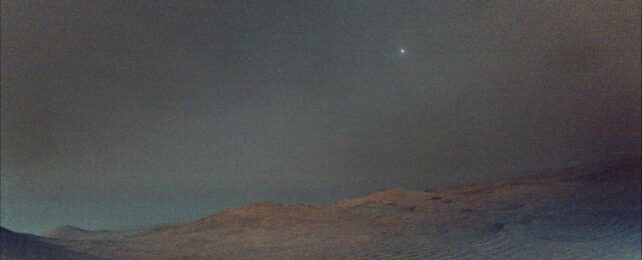There's not much hustle and bustle on Mars. The red planet is inhabited by no-one that we know of, except the robotic rovers toiling away to excavate its secrets.
The only sound you'd hear is the whispering of the wind. There are no crowds, not much in the way of turmoil (unless you happen to get caught in one of Mars's wild, global sandstorms). Nevertheless, a new image taken by Perseverance from its lonely vantage point in the Jezero Crater seems to convey the serenity possible on Mars like no other.

It was taken in the liminal pre-dawn darkness, at 4:27 am local time on 1 March 2025. The rover aimed its left Navcam above the horizon, and for a total exposure time of 52 seconds, stared at the sky – specifically, Deimos, the smaller and more distant of the two Martian moons.
At just 16 kilometers (10 miles) across, and orbiting at an average distance of around 20,000 kilometers from the Martian surface, Deimos is quite small when viewed from Perseverance's perspective. It looks like a bright star in the sky.
Mars has two moons; the other is Phobos. They were named for the sons of god of war Ares, the Greek counterpart for the Roman god Mars; their names mean fear (Phobos) and dread (Deimos). There are lots of mysteries about these little potato-moons. Scientists want to know where they came from, and where they are going.

Simulations suggest that Phobos, which orbits Mars closer than any other moon in the Solar System, and whose orbit is shrinking, will one day be torn asunder by the gravity of Mars and become a faint ring around its equator.
Deimos, at a much safer distance, is likely to escape this carnage; its fate, however, is not clear. Observations such as this haunting image captured by a lonely robot on the Martian surface are the tiny puzzle pieces scientists use to conduct their painstaking investigations thereon.
